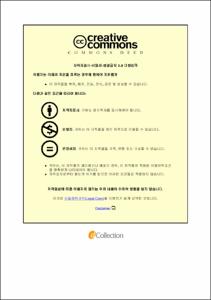SNS여행광고 메시지유형이 소비자 광고태도, 브랜드태도, 구매의도에 미치는 영향
- Abstract
- This study examined differences and interaction effects on response to different types of travel advertisement messages on advertisement attitudes, brand attitudes and the purchasing intention among college students. As a result, there was a significant difference of the response between empathy advertisement message and information advertisement message. Specifically, the response to empathy advertisement shows better advertisement attitude, brand attitude and purchase intention than information advertisement message, which illustrate that when it comes hedonic products, using empathy message strategy is better than information message strategy. On thr other hand, although both message types and empathy reaction have main effect to advertisement attitude, brand attitude and purchase intention, the interaction of message types and empathy reaction only works on brand attitude. The results indicated that empathy communication piays an imortant role in advertisement field. Exploring more empathy message strategy on travelling advertisement can activate the travelling market. In additon, there is also suggestions based on the result of this examination and the conduct of reserch in the future.
- Issued Date
- 2018
- Awarded Date
- 2018. 8
- Type
- Dissertation
- Keyword
- massage type empathy reaction advertisement attitude brand attitude purchase intension travelling advertisement.
- Publisher
- 부경대학교
- Affiliation
- 부경대학교 대학원
- Department
- 대학원 신문방송학과
- Advisor
- 김용호
- Table Of Contents
- Ⅰ서론. 1
1. 연구의 배경 및 목적 1
가. 연구의 배경. 1
나. 연구의 목적. 2
2. 연구의 구성 및 연구방법 4
Ⅱ이론적 배경 5
1. SNS 플랫폼 5
가. SNS의 개념과 이용현황. 5
나. SNS 광고. 8
2. 여행 광고에 대한 선행연구 10
가. 여행사 광고 10
나. SNS 여행광고 12
다. SNS여행광고의 특성과 역할. 14
3. SNS 여행광고의 메시지 유형 16
가. SNS 여행광고와 설득커뮤니케이션 16
나. 설득 메시지의 유형. 18
다. 광고의 공감커뮤니케이션 특성. 19
4. SNS 여행광고의 소비자 공감심리반응. 22
5. SNS 여행광고의 소비자 광고태도. 24
6. SNS 여행광고의 소비자 브랜드 태도. 25
7. 소비자 구매의도 26
Ⅲ 연구방법 27
1. 연구 모형 27
2. 연구 가설 28
3. 조작적 정의 29
가. 공감심리반응 29
나. 광고태도 29
다. 브랜드태도 29
라. 구매의도 30
4. 실험설계 30
가. 실험처치 31
나. 실험 자극물의 조작 점검 및 측정 변인의 신뢰도 검증 32
다. 측정 변인의 신뢰도 검증 34
Ⅳ 분석결과 36
1. 응답자의 특성 36
2. 변인과의 상관관계 38
3. 가설검증 39
가. 연구가설1에 대한 분석결과. 39
나. 연구가설2에 대한 분석결과. 41
다. 연구가설3에 대한 분석결과. 42
Ⅴ 논의 및 결론 48
1. 연구의 요약 48
2. 연구의 시사점 및 한계점 . 51
참고문헌. 53
설문지 60
- Degree
- Master
- Files in This Item:
-
-
Download
 SNS여행광고 메시지유형이 소비자 광고태도, 브랜드태도, 구매의도에 미치는 영향.pdf
기타 데이터 / 1.02 MB / Adobe PDF
SNS여행광고 메시지유형이 소비자 광고태도, 브랜드태도, 구매의도에 미치는 영향.pdf
기타 데이터 / 1.02 MB / Adobe PDF
-
Items in Repository are protected by copyright, with all rights reserved, unless otherwise indicated.